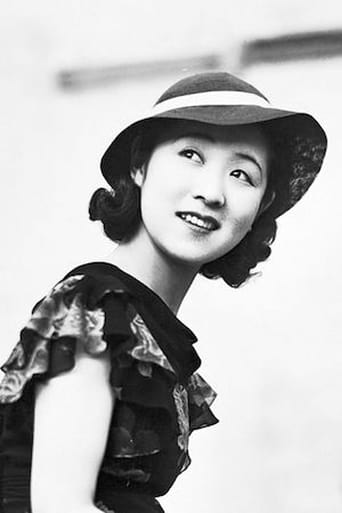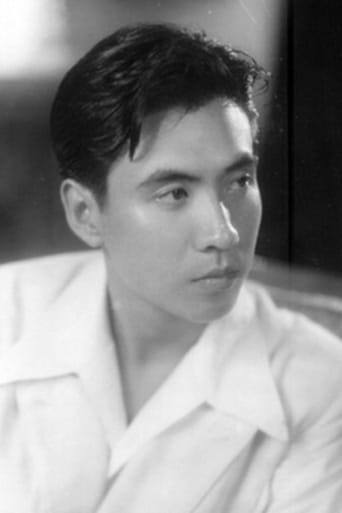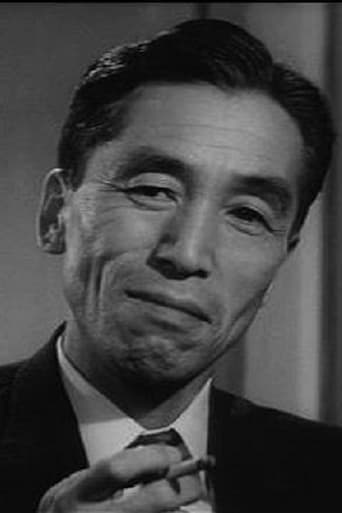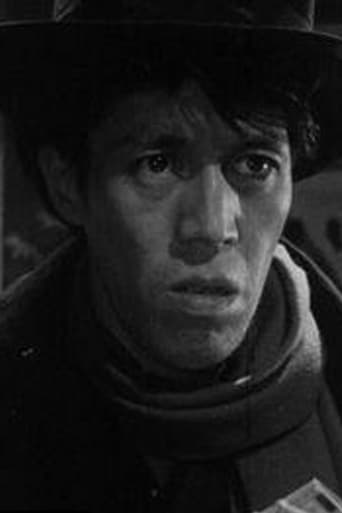bartolomeudebensafrim
The movie is like a sequence of floating woodblock prints. almost every single shot is of astonishing beauty. the music is equally remarkable and when the narrative, the visual beauty and the music combine, it is too much to handle (i cried as if my own mother was going to Narayama).i was a bit upset by the immorality of it, by the absurdity of it all. i am familiar with japanese culture and understand their unique relationship with death and honor - but this movie pushes everything to a strange painful limit.the tremendous performance by Kinuyo Tanaka (Orin) makes the climb a very moving experience. the detail of the new wife's affinity towards the kind woman that is about to leave is just brilliant (the novel must be quite good aswell). Orin shows her the secret trout fishing spot and there is this immense pain that strikes us, this notion of the absurd amount of knowledge that lives inside elders, and of all the time that could still be used to learn and bond if it wasn't for the Narayama tradition.the photography is just magical. the final scenes, after the warm coloured intimacy of the village, seem like the most desolate scenario conceivable - it makes something like Peter Jackson's Mordor, in LOTR, look like a kindergarden. just beautiful from start to finish. this is a the kind of movie that reminds me of what cinema was all about.
zetes
I had seen Shohei Imamura's version of this novel a few years ago, and it ranks as one of my favorite films. This earlier version, presented as a sort of kabuki-like play, loses a bit of its power because it streamlines the narrative a bit (not that I've read it; I suppose Imamura could have added details), but it's quite a wonder itself. The focus is more on the grandmother, the old woman who is to be taken and then abandoned on Narayama, here played by Kinuyo Tanaka. Teiji Takahashi (who acted in several Ozu films) plays her son, the man who is reluctant to follow the tradition. The acting is very good, though obviously stylized. What one will probably most remember about this version of the story is the gorgeous, painterly cinematography. It's all deliberately artificial, with a lot of painted backdrops and seamless scene transitions (Joe Wright's recent Anna Karenina adaptation may have been directly influenced by it). One moment that I found unintentionally funny: a bunch of crows are startled at one point and start to fly around, and a couple of them run into the matte painting in the background and have to turn around. The film is quite a wonder to behold, and the emotional heft of the story still works. It's certainly a nice companion piece to Imamura's masterpiece.
FilmFlaneur
The Ballad Of Narayama (aka: Narayam bushiko) is a film by Keisuke Kinoshita, whose directing career stretched over 40 years. In notable fashion it mixes kabuki style balladeer narration and musical accompaniment with a tragic story set around responsibilities of old age, rural hardship, family cruelty and the painful obligations brought by restrictive and conservative social convention. It's a consideration of that which is a characteristic of many films made before, and during, the golden age of Japanese cinema. In the hands of masters like Mizoguchi, for instance, such depictions frequently evolved into profound considerations of the female condition. (In fact star Kinuyo Tanaka, was a favourite of that master, having previously appeared in films like Sansho Dayu and Ugetsu Monogatari.) Narayama is of that old school: an often painful - this viewer for one will long remember the moment when the old woman knocks out her own teeth on the edge of a stone grinder - and frequently moving account of a society which denies dignity to the old but which, at least in one instance, is granted them anyway. Such a traditional style of storytelling all but vanished when a new wave of Japanese directors come to prominence in the following decade. As others have observed the biggest irony of the film is that grandmother Orin is probably the single most productive member of her immediate circle. Of her nearest relatives, as she herself says: "Tatsuhei and Kesakichi are useless" - seen thus, her looming absence is very much a tragedy on both a social, as well as a personal, level.Much of Narayama's power is drawn from its exquisite staging, an entirely successful recreation of a village environment and surrounding countryside done entirely in the studio. Except for the striking final shots, every part of the film is artificial, including the passing of time, even if emotions evoked thereby are not. Intense character interactions are sometimes emphasised in pools of light, while at another moment the set is lit in an ominous red; painted backcloths occasionally drop to provide transition between one scene and another, while actors end their parts in silhouette as the next action starts up behind them. Close ups are used sparingly, characters typically seen at a distance in their environment, again as on a stage. It is a process unique to this version of the tale, based on the folk story Dumping Grannies. It was one that, incidentally, was not copied over by Imamura in his, also critically successful, 1983 remake of Narayama with the result that that film arguably had a wider international appeal (it won top prize at Cannes).In a different tradition entirely, the artificiality and expressionism on display in the present version recall that of Kwaidan (1964) a colour horror film where even the sun and sky are painted in dramatic fashion - even though not with quite the intensity. The result of Narayama's very deliberate technique is to emphasise the narrative texture of events as well at the same time to place them firmly within a particularly nationalistic tradition of story telling. It's also a cumulative effect given abrupt contrast by the last scene of the film, which places events back in a modern context.In the film, moments of pathos and tragedy frequently counterbalance those of formality and ritual, and it's the tension between these two that gives the results power, and their Japanese flavour. This is most notable during the final trip to the mountain, one made by the despairing son carrying his grandmother upwards on his back. It's a long journey both for the principals as well as in actual screen time, as the passage occupies long and frequently silent minutes as they pass deliberately through the artificially crafted landscape. It's one that has been previously described, and its responsibilities circumscribed, by the precise instructions of village elders. But it speaks volumes too as far as the central relationship is concerned; heartbreaking as the mother refuses to communicate during her final hours, and as we see Tatsuhei torn between duty and natural familial feeling.As one might expect the performances in Narayama are uniformly excellent, although that of Tanaka ought to be singled out for especial praise. Her portrayal of Orin conveys sadness, warmth and self-sacrifice in equal, convincing measure. With her entirely honourable acceptance of her destiny, and blind faith in the reasoning behind it, she is as much a reflection of her society as she is criticism of it. Termed by her contemporaries the "33 devil teeth woman" for her unhelpfully intact dental work (a sign of her continuing, unwelcome food consumption), Orin never the less retains a defining put-upon dignity which remains intact for the duration of the film, even when she says nothing but droops sadly, carried to her fate on her son's back.A world away from the MTV editing techniques and CGI laden work of contemporary Hollywood product, some will find the essentially static nature of this film a challenge, and indeed for a introduction to classic Japanese cinema viewers would be better directed to the contemporary work of Kurosawa. Others will be pleased that such a relatively hard to see classic is at last available after some time out of circulation. The Ballad Of Narayama is a film whose formal beauty and human qualities impress even today.
Pedro Pinto
Truly the work of a master filmmaker. Although I learn Mr. Kinoshita died about two years ago, he left this lesson of how to film, photograph AND musically score movies. I know this is a hard-to-get movie, and it's a hard-to-"get" movie, but once the story drifts into your brain, you will forget it not. The synopsis (and this is not a SPOILER) is simple. Old Village has tradition to send the old (70 years old) up a mountain to die. Mother of widowed son wants to do this. She is 73 and still waiting for her son to get married. Son loves mom and doesn't want her to die alone on mountain.Enter spouse-to-be. Enter the pain of the son versus the power of tradition. All of this Beautifully shot. AND it has a remake, by Shoei Imamura, inferior in storytelling and art yet superior in fame.







